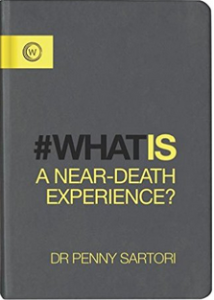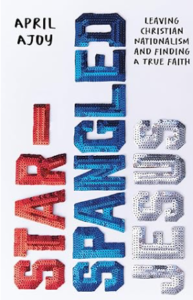 I received a complementary copy of this book for review purposes. The opinions are completely my own based on my experience.
I received a complementary copy of this book for review purposes. The opinions are completely my own based on my experience.
One of the best books I read and reviewed in 2014 was Dr Penny Sartori’s The Wisdom of Near Death Experiences. Dr Sartori has followed up this work with a new book featuring more of her findings, What is a Near Death Experience?
Dr Sartori is one of the leading authorities in Near Death Experience (NDE) research. I like that she takes a scientific approach to the topic, based on her 17 years as an intensive care nurse. “I passionately believe that NDEs have something to teach all of us, even if we have never ourselves had a near-death experience or anything like it,” she writes.
As in her first book, What is a Near Death Experience contains many fascinating stories of NDEs. Like this one: “One of the clearest examples of a dBv (death bed vision) that I have seen occurred when I was working in ITu,” she relates. “I saw a patient begin to gesture, smile and talk to someone I couldn’t see. He seemed so happy. He talked this way for about 30 minutes and then fell asleep. The following day he told his family that during the night he had been visited by his mother and grandmother, both of whom were dead, and also his sister. He couldn’t understand why his sister would have been in his vision, though, seeing as far as he knew she was still alive. Of course, that wasn’t the case –she’d died the week before, but his family had kept her death from him, for fear of upsetting him. A few days later he died entirely at peace.” This and many other stories in the book, based on her first hand observations, lead me to believe NDEs are to be taken seriously, even though I’m not quite sure what to make of them.
I also like how Sartori deals with objections. Such as the near death encounters with relatives – are they real or just a figment of the NDE person’s imagination? “NDEr meets deceased loved ones, and several cases in my own research have revealed NDErs did not meet the relatives in their NDE who they would, when asked during life, most wish to meet,” she writes. “If wishful thinking were the trigger for an NDE, we would expect that the fulfilment of the wish – meeting our closest relatives rather than distant ones; and finding our fondest friends, rather than acquaintances –would be the likely outcome.” Many of the stories she relates are positive NDEs, regardless of the person’s religious beliefs. “It’s the calmest and clearest I’ve ever felt,” said one. “The closest I can manage is to say that it felt like I was surrounded by and filled with pure love and contentment.” But Sartori also tells of NDEs that are frightening to the person. “Why are some NDEs distressing and others not?” she says. “We have no clear evidence why some people have pleasant NDEs and others have distressing ones.”
Sartori doesn’t claim to know everything about NDEs. “Science doesn’t appear to offer us any realistic or robust answers –all we can do is keep researching, keep recording the experiences and talking about them, then analyze them as closely as we can to watch the patterns emerge,” she writes. “However, just because our current science cannot explain NDEs does not mean that these are not real.” If you are interested in NDEs Sartori’s two books on the subject are musts for your library, and I look forward to reading more from her in the future based on her continuing research.



